Top 10+ Worst Natural Disasters In the World History
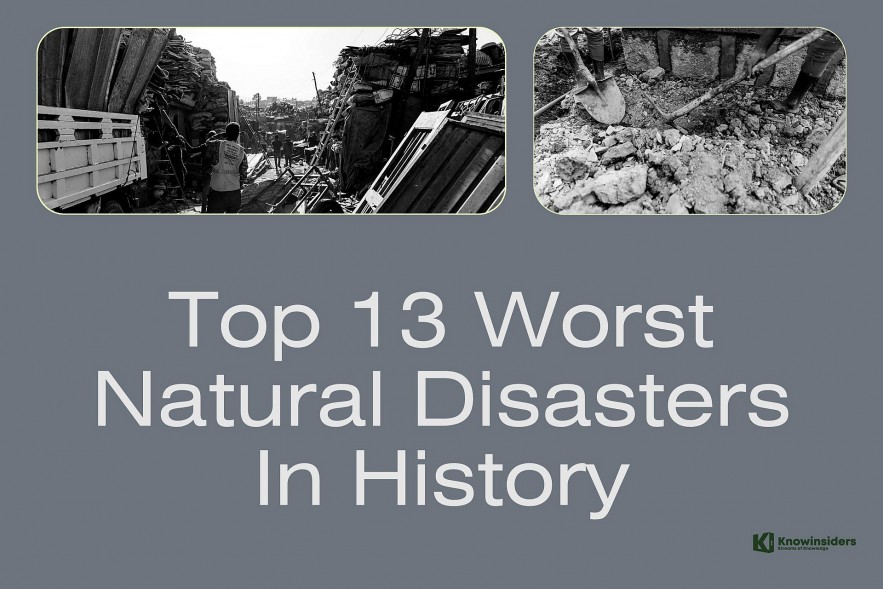 |
| Top 13 Worst Natural Disasters In History. Photo: KnowInsiders.com |
| Contents |
Natural disasters have changed in kind as a result of climate change. Not only are the effects of climate change evident today, but suffering among people began hundreds of years ago. The most deadly natural disasters in recorded history are included in the list below. China was home to the bulk of them.
What are Natural Disasters?
Natural disasters are violent occurrences that are not under human control. They are brought on by natural forces and have the potential to cause property damage, injury, and even death.
All forms of extreme weather are considered natural disasters and can be extremely dangerous to property, people's health and safety, vital infrastructure, and national security. Seasonal and unforeseen natural disasters frequently cause periods of instability, disruption, and financial loss for the country. Anywhere, at any time, can experience a disaster. Nonetheless, some places are more vulnerable to particular kinds of natural disasters than others.
Avalanche, drought, earthquake, flooding, hurricane, tornado, tsunami, volcanic eruption, and wildfire are just a few of the various kinds of natural disasters.
Top 10+ Worst Natural Disasters In th World History
1. Central China Flood of 1931 (2 Million–3.7 Million Deaths)
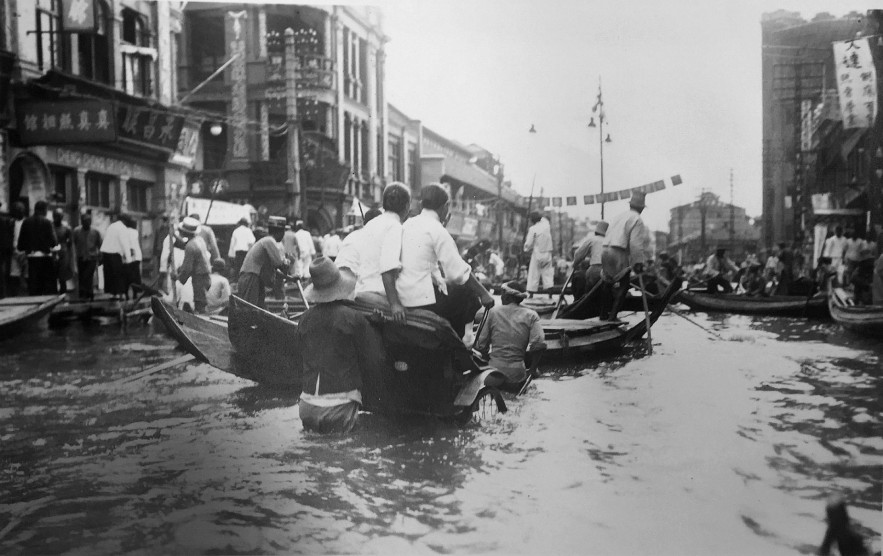 |
| Photo China Dialogue |
A large portion of central and eastern China, including heavily populated cities like Wuhan and Nanjing, flooded between June and August of 1931. Depending on the source, the floods are estimated to have claimed between 422,499 and 4,000,000 lives.
Extreme weather was common in China in the late 1920s and early 1930s. In 1928 and 1930, the nation experienced a drought. Subsequently, the severe winter of 1930 left significant snow and ice deposits surrounding mountainous regions.
The snow and ice began to melt at the beginning of 1931 and flowed into the Yangtze River downstream. Although the area is used to higher water levels in the spring, summer, and fall, in 1931 the flow was steady.
| A dike around Lake Gaoyou was breached on August 25, 1931. Almost 180,000 square kilometers, or the area of New York, New Jersey, and Connecticut put together, were submerged under the floods. A large amount of farmland and housing was destroyed by the floods. In the Yangtze Valley, about 15% of the wheat and rice crops were destroyed. The floods caused the price of essential commodities to soar, which had an effect on the economy. |
2. 1887 Yellow River Flood in China (900,000 Deaths)
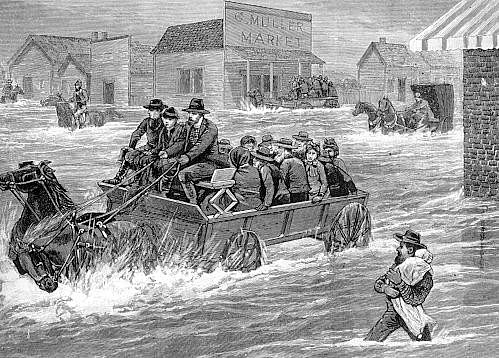 |
| Photo University of Houston |
China's most dangerous floods are caused by the Huang He River, also known as the Yellow River. Stretching from Qinghai province in the northern mountain to the Yellow Sea, which sits between China and Korea, the river is three thousand miles long. The river has been dubbed "China's Sorrow" by outsiders due to the massive property destruction and fatalities it has caused. 900,000 people lost their lives to flooding in 1887 alone. The tragedy did not end there; in 1931, floods claimed the lives of nearly four million people, and in 1938, nearly one million.
The Yellow River's waters are believed to have breached the dikes at Huayankou because of the low-lying plains in the vicinity of Zhengzhou, in the province of Henan. Because of this, the floods were able to swiftly spread throughout Northern China. Over 50,000 square miles were inundated by the floods, which destroyed homes, businesses, farms, and other properties whose exact value is still unknown. Two million people were left without access to basic amenities and without a place to live. Nearly 4 million people have died as a result of flooding caused by the Yellow River to date. What a blight!
How to predict natural disastersThe best method for forecasting or determining the timing of natural disasters is to examine those that have already occurred. This provides scientists with crucial knowledge about the preludes to natural disasters. It also aids in the scientists' comprehension of the natural forces responsible for disasters. Scientists have made significant progress in understanding the causes of hurricanes, tornadoes, and flooding. However, predicting natural disasters like earthquakes and volcanic eruptions is far more challenging. Volcanoes can occasionally erupt without any prior warning, but they also occasionally leak gases or shoot lava as warning signs. Predicting earthquakes is also challenging. Nonetheless, the world's most seismically active regions are known to scientists. These locations employ equipment to keep an eye out for any changes that might indicate an impending earthquake. |
3. 1556 Shaanxi Earthquake in China (830,000 Deaths)
An earthquake in Shaanxi, China, on January 23, 1556, is thought to have killed 830,000 people. Although it is difficult to precisely count the number of casualties from large-scale disasters, particularly those that occurred before the 20th century, this disaster is still regarded as the deadliest ever.
Aftershocks from the late-evening earthquake persisted into the next morning. Subsequent research by scientists indicated that the earthquake's magnitude was between 8.0 and 8.3, which is not very close to the strongest tremor ever recorded. But the earthquake happened in the middle of a heavily populated area with shoddy-built homes and buildings, which led to a horrifying death toll.
READ MORE: Recent Eartquake In Dehli India: What To Know?
4. 1970 Bhola Cyclone in Bangladesh (500,000 Deaths)
 |
| Photo Weather Channel |
Bangladesh, which was then known as East Pakistan, was struck by the Bhola tropical cyclone in 1970. According to data from NOAA's Hurricane Research Division, the wind speed reached 205 km/h, making it the deadliest tropical cyclone on record for the world.
The National Hurricane Center and the Pakistan Meteorological Department reported in 1971 that the surge in seasonal workers who had come to the area to harvest rice posed a significant obstacle to accurately determining the storm's death toll.
5. 1839 Coringa Cyclone (300,000 Deaths)
Coringa was struck by a violent tropical cyclone on November 25, 1839. Although the exact speed is still unknown, the storm surge that arose reached heights of up to forty feet. It destroyed twenty thousand ships and totally demolished the city.
Such catastrophes were nothing new to Coringa. Even after a cyclone struck the city 50 years ago and killed 20,000 people, the city recovered. Nevertheless, Coringa never fully recovered to its previous splendor following this specific incident, and it is still a small village today. Because this area is so vulnerable to cyclones, the British gave it the new name "Hope Island" in the hopes that good fortune would spare it from further calamities.
Preparing for Natural DisastersBuildings in developed nations that experience earthquakes, like the US and Japan, are designed to withstand all but the strongest tremors. It is possible to construct storm shelters to give people a secure location to stay during tornadoes and hurricanes. England's Thames Barrier was constructed to keep flooding out of London. Due to its high cost, this kind of preparation is less common in developing nations. |
6. 526 Antioch Earthquake in Turkey (250,000–300,000 Deaths)
The Antioch earthquake occurred in late May of AD 526.
The Antioch earthquake occurred in Antakya, Turkey.
What was the death toll from the Antioch earthquake? It is believed that all 250,000 or so residents of the city died in the earthquake, despite the fact that population had decreased since the city's peak.
Antioch's strategic location rendered it a vital fortification of the Eastern Roman Empire against the Persian menace emanating from the east. The year following the earthquake, Justinian took the Byzantine throne and lavishly rebuilt the city. But it was in vain because the Persians sacked it a mere twelve years later.
7. 1976 Tangshan Earthquake in China (255,000 Deaths; 700,000 Injured)
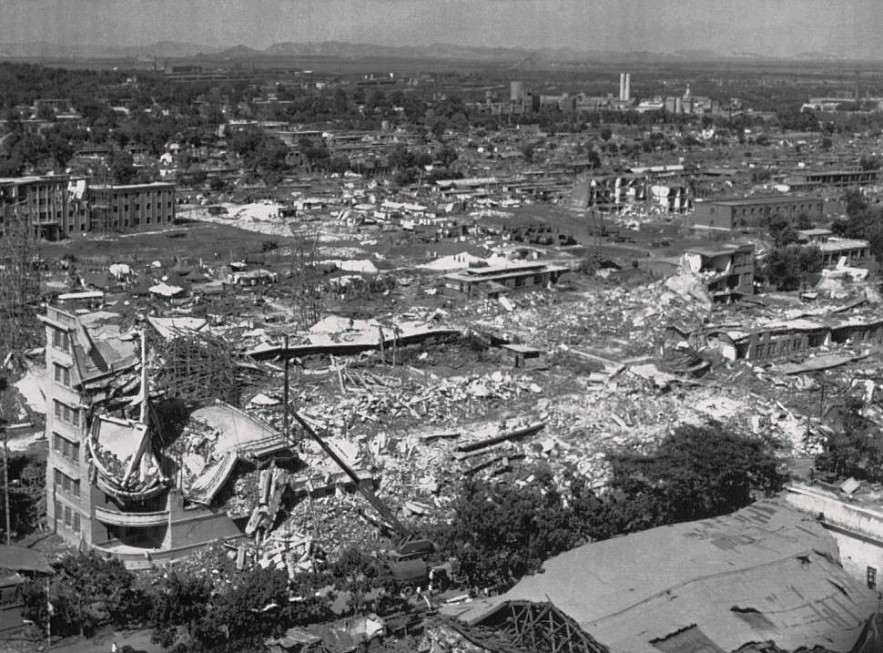 |
| Photo Getty |
Tangshan, an industrial city in China with a million or so residents, is completely destroyed at 3:42 in the morning by an earthquake with a magnitude of 7.8 to 8.2 on the Richter scale. The earthquake was particularly costly in terms of human life lost because almost everyone was asleep in their beds rather than outside in the relative safety of the streets.
Only the 300,000 fatalities from the 1737 earthquake in Calcutta and the 830,000 estimated deaths from the 1556 earthquake in China's Shaanxi province make up the list of the deadliest earthquakes in recorded history, which claimed the lives of an estimated 242,000 people in Tangshan and the surrounding areas.
8. 1920 Haiyuan Earthquake in China (273,400 Deaths)
An estimated 273,400 people were killed in the devastating 7.8 magnitude earthquake that struck Haiyuan Country, Ningxia Province, Republic of China on December 16, 1920 (including some who passed away from complications months later).
The total damage was greatly increased by the numerous landslides and aftershocks that the earthquake caused. Furthermore, the abrupt, violent motion of the earthquake dammed many rivers, causing severe flooding as some rivers' courses were entirely redirected.
Reducing the Effects of Natural DisastersThere are two primary methods to lessen the effects of natural disasters. While relief organizations can assist in addressing the issues brought on by the disaster, warning systems can advise people on how to prepare for a disaster. Appropriate preparation can also avert natural disaster-related fatalities. For instance, people have the option to forgo developing towns on floodplains, the flanks of active volcanoes, or in seismically active areas. |
9. 2004 Indian Ocean Earthquake (230,000–280,000 Deaths)
Just off the west coast of Sumatra, Indonesia, in the Indian Ocean, a catastrophic 9.1-magnitude earthquake caused a massive tsunami that slammed into 12 countries in South Asia and East Africa, reaching waves as high as 30 meters and traveling at a speed of about 800 km/h. People had little time to flee the hazardous areas because of its speed.
10. 1975 Typhoon Nina (over 200,000 deaths) in China
Typhoon Nina's torrential rains over a three-day period caused one of the most catastrophic floods in recorded history to occur in central China. After the typhoon, on August 8, the Banqiao dam collapsed on the River Ru in the western Chinese province of Henan, and other regions experienced the failure of 61 dams and reservoirs.
11. 2010 Haiti Earthquake (100,000–230,000 Deaths)
 |
| Photo history |
A devastating earthquake with a magnitude of 7.0 occurred on January 12, 2010, about sixteen miles to the west of Port-au-Prince, the capital of Haiti. The earthquake, which struck at 4:53 PM local time, was felt by almost three million people and caused 52 more aftershocks (4.5 magnitude or higher) in the two weeks that followed. The small island nation suffered catastrophic losses due to inadequate housing conditions, inadequate preparation, and inadequate earthquake retrofitting, which led to the collapse of over 30,000 commercial buildings and the destruction of over 250,000 homes.
The exact number of deaths is hard to determine and has long been disputed. According to the Haitian government, 222,000 people perished. However, the Haitian government has been accused of deliberately inflating numbers in order to receive more humanitarian aid in a number of investigations conducted by foreign organizations. More recent estimates put the death toll at roughly 100,000.
12. 1815 Mount Tambora Eruption (100,000 deaths)
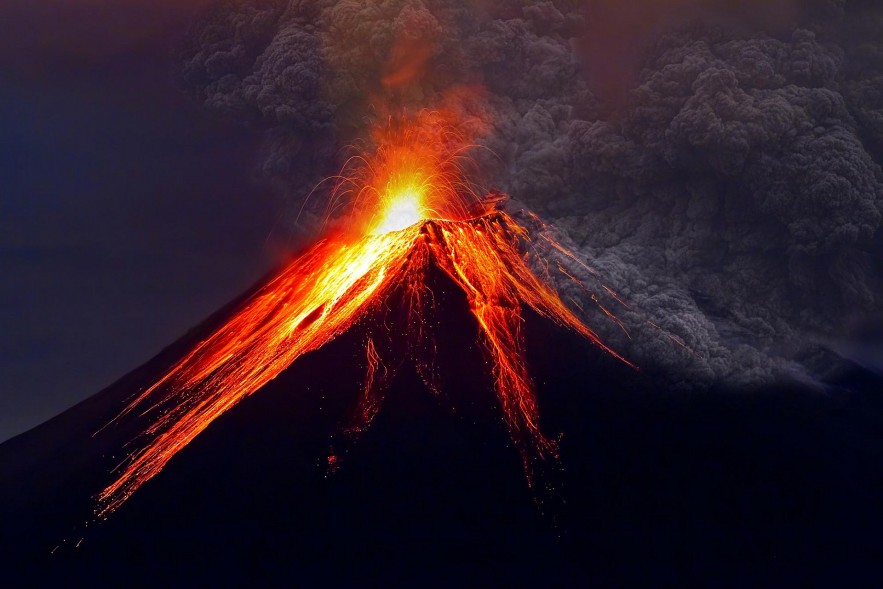 |
| Photo SciTechDaily |
When the Mount Tambora volcano in Indonesia blew its top on April 10, 1815, it was the climax of the largest eruption in recorded history. It's estimated that 36 cubic miles (150 cubic km) of exploded rock blasted into the atmosphere and could be seen from as far as 808 miles (1,300 km) away, according to NASA(opens in new tab).
The eruption caused so much volcanic ash to be released into the atmosphere that it decreased the amount of sunlight that could reach the surface of the planet. According to NOAA (opens in new tab), this caused the temperature in the Northern Hemisphere to drop by 1 degree Fahrenheit (about 0.56 degrees Celsius), and 1816 was dubbed "the year without a summer."
According to NOAA(opens in new tab), records show that the eruption resulted in 11,000 immediate deaths from pyroclastic flows, or swiftly moving solid lava, hot gas, and ash, and another 100,000 deaths from food shortages over the ensuing ten years due to a decrease in sunlight.
13. Kashmir Earthquake, Pakistan, India, Afghanistan on October 8, 2005 (87,000 deaths)
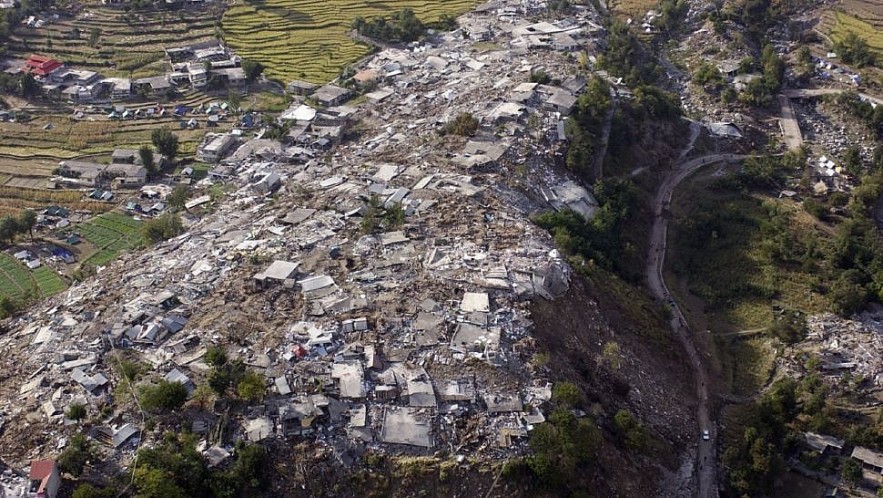 |
| Photo US Air Force |
At 8:50 a.m. (local time), this catastrophic earthquake with a Richter scale magnitude of 7.6 occurred. The areas that were most severely impacted were Kashmir, Pakistan's North-West Frontier Province (renamed Khyber Pakhtunkhwa in 2010), as well as adjacent areas in India and Afghanistan. The BBC reports that the earthquake destroyed about 90% of all the buildings in Balakot (opens in new tab).
According to NASA(opens in new tab), an estimated 3 million homes were destroyed throughout Kashmir, resulting in over 87,000 fatalities and an additional 100,000 injuries. The earthquake is thought to have been caused by the abrupt and rapid release of seismic stress between the Eurasian and Indian tectonic plates.
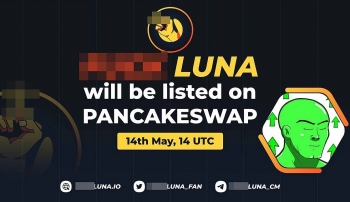 Cryptos Unusually Bullish - Taking Advantage of Luna Disaster Cryptos Unusually Bullish - Taking Advantage of Luna Disaster The memecoins that followed LUNA's collapse have many unusual signs, high risks for investors. |
 Amazing Facts About Thunderstorms: Causes, Types and How to Stay Safe Amazing Facts About Thunderstorms: Causes, Types and How to Stay Safe Whether you enjoy stormy weather or not, thunderstorms happen anyway. But how much do you really know about thunderstorms? |
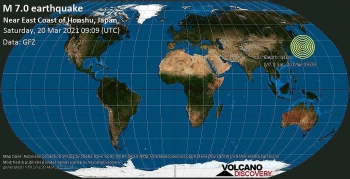 Update: Japan Earthquake shaking Tokyo, Tsunami Warning Update: Japan Earthquake shaking Tokyo, Tsunami Warning Japan Earthquake Latest News - A strong earthquake struck Saturday off northern Japan, shaking buildings even in Tokyo and triggering a tsunami advisory for a ... |
























